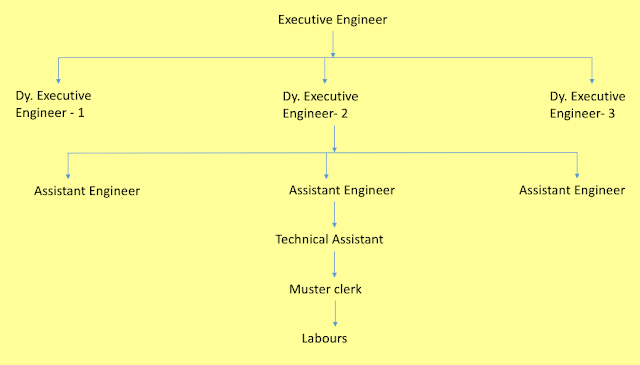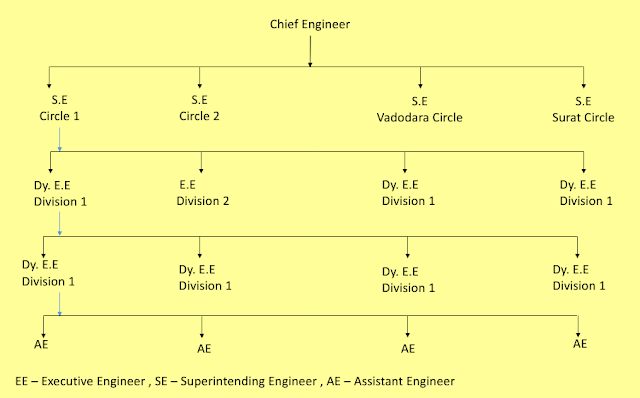Line or Military Organisation
This is the earliest, simplest and most important form of organisation. In this type of organisation, the authority descends from the top of the structure to its bottom level step by step through a downward delegation of authority.
All major decisions are taken by the executives at the top and passed on to their immediate subordinates for necessary action at their level.
Thus a direct relationship of authority and responsibility is established between the superiors and subordinates.
This type of organisation is based upon earlier military formation.
As in army, commander in chief has full control over the entire army of the country through his major generals and area commanders and so on.
Excatly the same pattern is followed in line organisation. The same pattern is followed in public works departments as shown in figure.
Figure shows the line organisation of a division of the public works department (PWD) of a state.
As shown in figure the Dy-executive engineer receives orders regarding work from the executive engineer. Similarly assistant engineer receives orders from Dy. executives engineer and so on.
Chief Engineer (CE)
Superintending Emgineer (SE)
Executive Engineer (EE)
Deputy Executive Engineer (Dy. EE)
Assistant Engineer (AE)
Additional Assistant Engineer (AAE)
Advantages of line organisation :
- It is simple to work and easy to understand by the employees
- It permits quick decisions
- It is most effective and economical
- It provides strong discipline
- Responsibility is fixed and every body knows to whom he is responsible and who are responsible to him.
- The system has flexibility and persons may be moved from one position to another without difficulty.
- It provides effective co-ordination within each department
Disadvantages of line organisation :
- As the top executive has to perform many duties, the progress of work may suffer as he is left little time to look after the progress of the work
- The organisation is rigid and inflexible
- Top executive and key men are overloaded
- Generally there is inadequacy of communication from lower levels to upper levels
- It is not possible to take advise from experts
- Hence all decisions have to be
- taken by the person inchange himself
- The loss of one or two capable persons may affect the whole organisation badly
- Good and trust worthy persons are overloaded
- Instructions from top to bottom and feed back in the reverse direction, tends to be rather slow, thereby affecting the progress of the work
- The system has no provision of rewarding good workers


